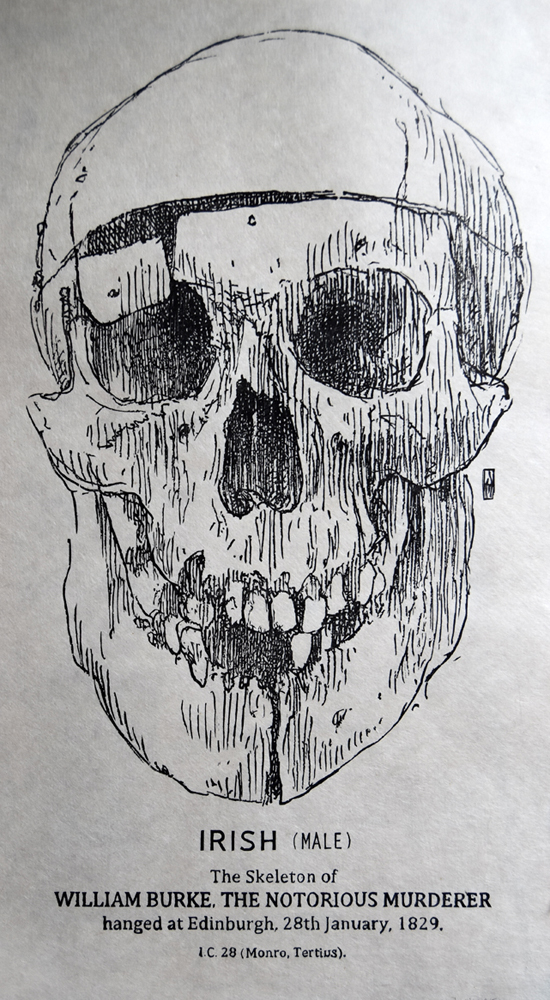This print started as a drawing in my sketchbook during my last visit to Edinburgh. For the woodcut, I enlarged and transferred the drawing to the block along with the text
from the original specimen label. In keeping with the practice of the time, anatomists frequently cataloged their specimens according to gender, ethnicity, and trade. So
here Burke, a native of County Tyrone, was displayed as an example of an Irish male as well as a notorious criminal.
William Burke, the Notorious Murderer
In the 1820s, Edinburgh was the leading center for the study of human anatomy. Scottish law, however, limited the study of cadavers to criminals, suicides, and orphans. There
simply were not enough corpses to fill demand, so anatomists frequently turned to grave-robbing "resurrection men" to supply the dissection tables of their anatomy theatres
When a lodger in William Hare's house died in November 1827 owing Hare back rent, his friend William Burke suggested they sell the body to recoup the debt. They found a buyer
in Dr. Robert Knox, from whom they received a generous £7 10s. Encouraged by this windfall, but finding grave robbery to be dangerous and dirty work, Burke and Hare decided
instead that murder was preferable as it left a fresher corpse to earn a higher fee.
For a period of ten months, and possibly aided by their wives, Burke and Hare murdered sixteen people, all of whom they sold to Knox for his lectures. Knox approved of the
freshness of the bodies and without asking further questions paid £10 for each. Burke’s and Hare’s scheme was ruined when boarding house lodgers uncovered the body of their
final victim, Margaret Docherty, before it could be sold.
Hare was granted immunity from prosecution in exchange for his confession and turning king's evidence. He testified against Burke, who was found guilty of murder and hanged
before an enormous crowd on 28 January 1829. Alexander Monro, known as "Tertius" because he was the third member of his family with that name to serve as chair of anatomy for
the University of Edinburgh, dissected Burke's corpse in his lecture four days later, during which he wrote a note with a quill dipped in Burke's blood. Burke's skeleton was
prepared and later placed on display in the Anatomical Museum, and his skin tanned and used to bind at least one book.
This limited edition hand-pulled print is available for purchase now through the MundieArt Etsy shop.



